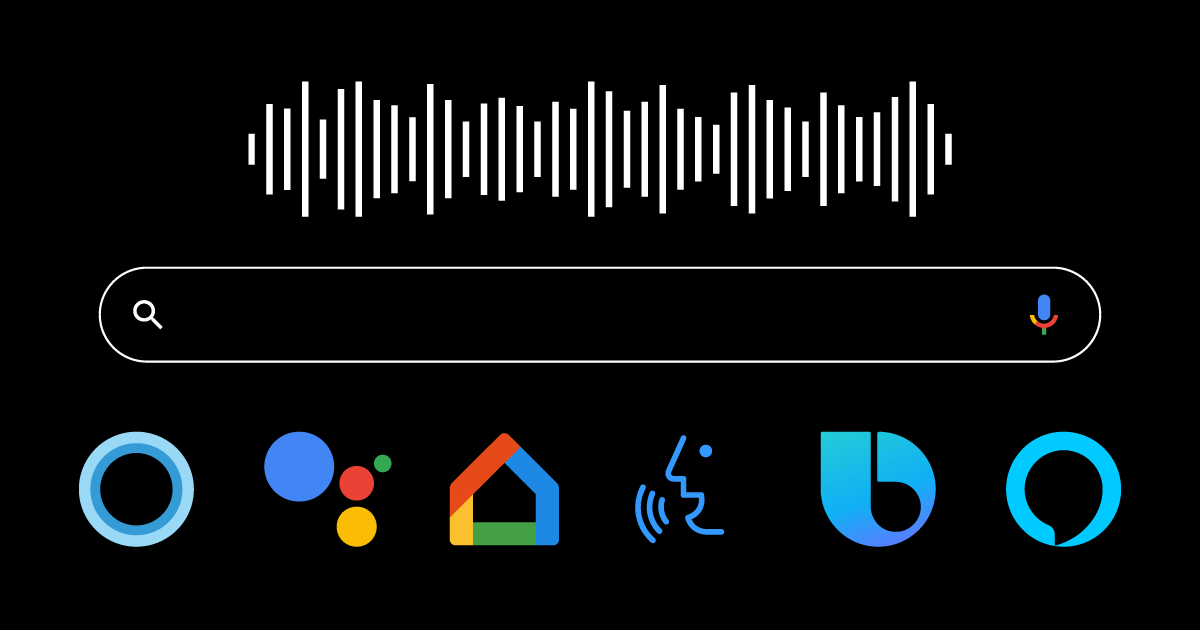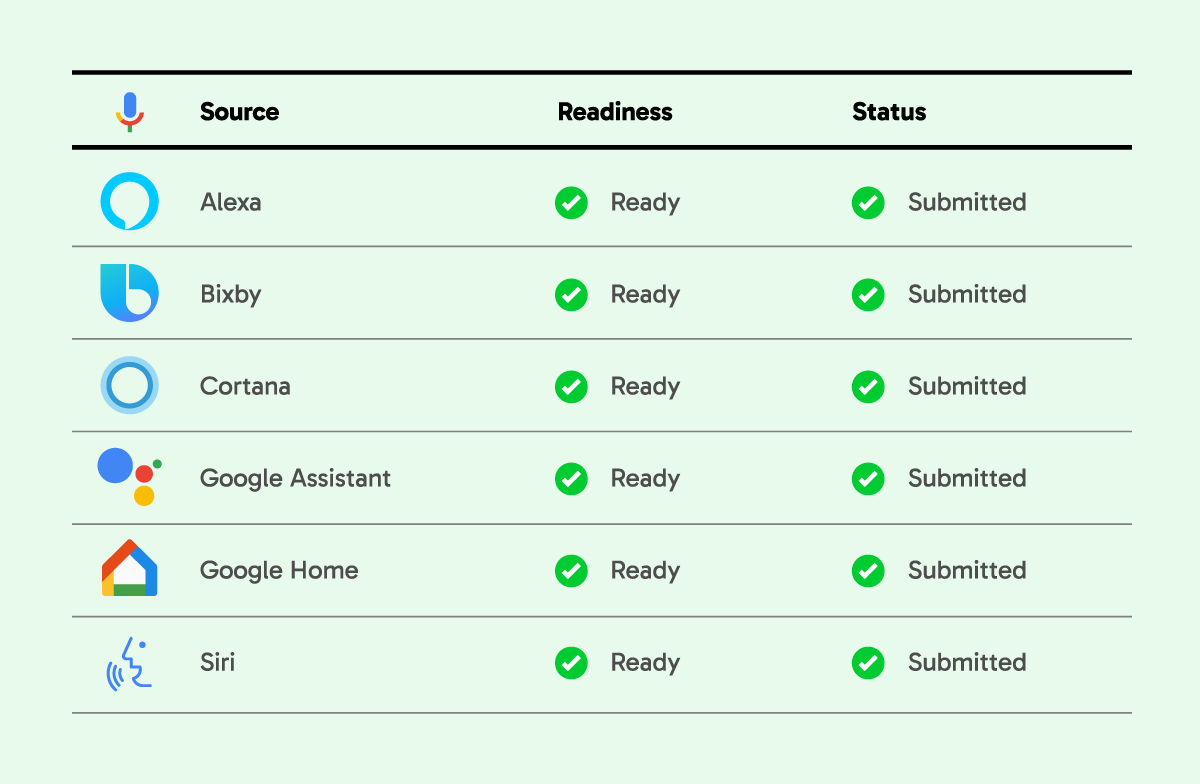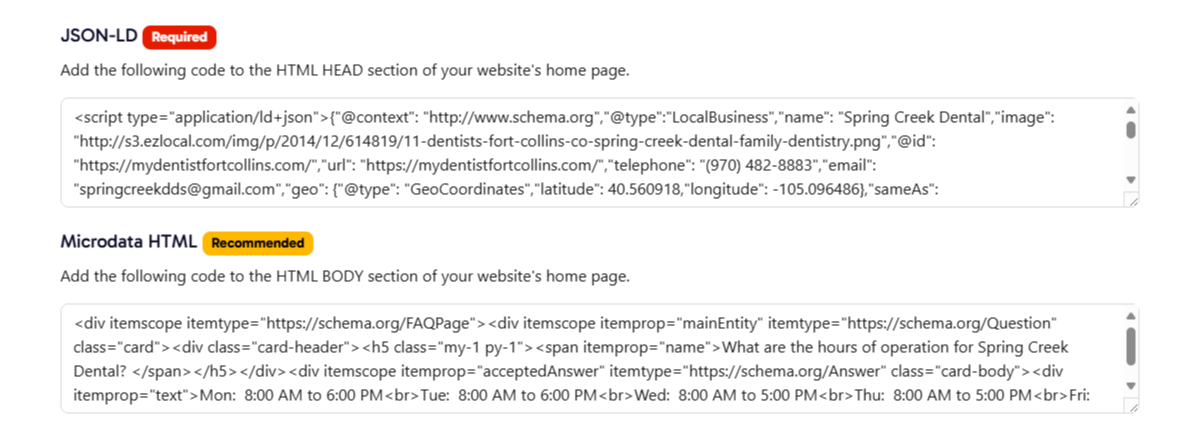Optimizing for Voice Search: How To Get Your Business Found on Voice Search
Apr 23

In today’s digital landscape, voice search is revolutionizing how customers find businesses like yours. With over 1 billion voice searches happening monthly and 76% of searches in 2024 projected to be local, optimizing for voice search is a must for small businesses. Whether you’re a dentist with a storefront, an auto repair shop, or a plumber serving a wide area, this guide will show you how to boost your visibility on Google Assistant, Alexa, and beyond. Let’s dive into simple, effective steps to optimize your listings and website for voice search success.
Why Voice Search Matters to You
Voice search, powered by assistants like Google Assistant, Amazon Alexa, and Apple’s Siri, lets people search using natural, spoken questions. It’s fast, hands-free, and incredibly accurate (Google boasts 95% word accuracy). With 62% of Americans using voice search on phones, in cars, or at home, and the voice recognition market growing by 24.4% from 2022 to 2027, it’s a trend you can’t ignore.
For small businesses, voice search is a goldmine because it’s often local. Customers ask, “Where’s the nearest dentist?” or “Who's a good plumber near me?” If your business isn’t optimized, you’re missing out on these ready-to-buy leads.
Step 1: Make Your Listings Voice-Search Ready
Local SEO (Search Engine Optimization) is the backbone of voice search visibility. Here’s how to ensure your business pops up when customers ask:
- Claim Your Google Business Profile
Start by claiming your free listing at Google Business Profile. For storefronts like dentists or auto shops, add your address, phone number, and hours. For service area businesses like plumbers, select “service area business” and list the regions you cover (e.g., “plumbing in Seattle”).
Pro Tip: Add details like “open late” or “emergency services” to grab attention.
- Keep Your Info Consistent
Your business name, address, and phone number (NAP) must match across your website, Google, Yelp, and other directories. Mismatched info confuses search engines and hurts your ranking.
- Gather Reviews
Happy customers? Ask them to leave a Google review. More positive reviews boost your credibility and local SEO, voice assistants often favor businesses with strong ratings. Reply to reviews to show you’re engaged.
- Service Area Boost
Plumbers and electricians: Get listed in local directories and review sites specific to your service areas. This builds authority and helps you rank for queries like “Find a plumber in Austin."
Step 2: Optimize Your Website for Voice Search
Your website needs to be as voice-friendly as your listings. Here’s how:
- Use Conversational Keywords
Voice searches are longer and more natural than typed ones. Instead of “dentist,” people say, “Who’s the best dentist near me for whitening?” Add these phrases to your site. Try Google Keyword Planner to find ideas.
- Add an FAQ Page
Voice assistants love FAQs. Write questions like “How often should I get my car serviced?” or “Do you fix burst pipes at night?” Keep answers short and conversational.
- Go Mobile-Friendly
Most voice searches happen on phones, so your site must look great and load fast on mobile. Test it with Google PageSpeed Insights.
- Use Schema Markup
This code helps search engines understand your site better, increasing your odds of being read aloud by voice assistants. Get started with Google Structured Data Markup Helper.
- Speed It Up
A slow site drives customers away. Optimize images and use fast hosting to keep things snappy.
Step 3: Create Voice-Friendly Content
Your content should feel like a chat, not a lecture. Here’s how to nail it:
- Talk Like a Human
Skip the jargon. Write simply: “We fix cars fast so you’re back on the road” beats “We provide expedited automotive repair services.”
- Answer Questions Up Front
Voice assistants want quick answers. For example: “Yes, we’re open Sundays. Drop by anytime from 9 AM to 5 PM.”
- Add Local Flavor
Mention your location naturally: “Dentist in Denver” or “Plumbing across Miami.” This ties you to local voice searches.
Step 4: Keep Everything Fresh
Optimization isn’t a one-and-done deal. Stay on top with these habits:
- Update Listings
New hours or services? Reflect them on Google Business Profile and beyond immediately.
- Check Reviews
Monitor and respond to feedback regularly, it keeps your SEO strong and customers happy.
- Track Website Performance
Use Google Analytics and PageSpeed Insights to ensure your site stays fast and user-friendly.
Voice Search Optimization for Service Area Businesses
No storefront? No problem. Here’s how plumbers, electricians, and others can stand out:
- Set Up as a Service Area Business
In Google Business Profile, list your service zones (e.g., “electrician serving Phoenix suburbs”) to appear in local searches.
- Highlight Coverage Areas
On your site, say, “We fix leaks across Houston” to clarify where you work.
- Build Local Citations
Get listed in area-specific directories to boost your local presence.
Service-area businesses with no published address, such as plumbers and contractors, can be found on voice search apps like Alexa, Bixby, Cortana, Google Assistant, and Siri, provided they are properly optimized.

How It Works
These voice assistants rely on various directories and platforms to provide local business information. For example:
- Google Assistant uses Google My Business, which allows service-area businesses to specify their service areas without a physical address, ensuring visibility in voice searches.
- Siri sources data from Apple Maps Connect and Yelp, both of which support service-area listings, making these businesses findable.
- Alexa pulls information from Yelp and other directories that accommodate service-area businesses, enabling them to appear in voice search results.
- Cortana uses Bing Places, which also supports service-area businesses, allowing them to be listed for voice searches.
- Bixby, though smaller in market share, supports business listings through services like Direction Local, suggesting service-area businesses can be found if optimized.
What You Need to Do
To ensure visibility, service-area businesses should:
- Claim and verify their profiles on these platforms, specifying service areas accurately.
- Ensure consistent business information across directories.
- Encourage customer reviews to improve rankings in voice search results.
Enhancing Your Website with Structured Data for Voice Search Optimization
Integrating structured data into your website is a powerful way to boost your visibility in voice search results. Structured data, often implemented as schema markup, is code added to your website’s HTML that helps search engines like Google better understand your content. This is particularly vital for voice search optimization, as voice assistants, such as Siri, Google Assistant, and Alexa, rely on natural language processing to interpret and respond to conversational queries. By incorporating schema markup, you make your website’s information more accessible and relevant to these assistants, increasing the likelihood that your business will be featured in voice search responses.
Dash by EZlocal simplifies this process with its intuitive tools, allowing you to create a Q&A section of frequently asked questions tailored to your business. This feature, available through dash.ezlocal.com, enables you to provide conversational content, such as answers to “What services do you offer?” or “What are your operating hours?” complete with schema markup. This conversational format aligns perfectly with how users phrase voice search queries, often using long-tail keywords like “Where can I find a plumber near me open now?” Dash takes the technical burden off your shoulders, making it easy to optimize your site without needing advanced coding skills. The result? Your business stands out with rich search results and voice actions that connect you directly to potential customers.
Beyond basic optimization, adding schema markup to your Q&A sections offers significant benefits. Properly marked-up FAQ pages can qualify for enhanced displays in search results, known as rich results, and trigger specific actions on voice assistants, helping you reach the right audience more effectively. For example, by answering common customer questions with specific, dialogue-friendly responses and embedding schema markup, you cater to voice search’s preference for clear, concise information. This not only improves your visibility but also sets your listing apart from competitors, positioning your business as a top choice when voice assistants respond to user queries. With Dash by EZlocal, you can seamlessly integrate this strategy into your website, ensuring your content is both user-friendly and voice-search-ready.

Let EZlocal Handle Voice Search Optimization for You
In today’s fast-paced digital world, ensuring your small business is visible on voice search platforms like Alexa, Bixby, Cortana, Google Assistant, and Siri is essential for staying competitive. However, managing listings across the numerous directories that feed data to these voice assistants, such as Google My Business, Yelp, and Apple Maps Connect, can be overwhelming, especially for busy business owners. That’s where EZlocal’s Dash platform (dash.ezlocal.com) comes in. Dash simplifies voice search optimization by submitting and maintaining your business information across these critical directories, ensuring your details are accurate and consistent so voice assistants can easily find and recommend your business to potential customers.
Getting started is straightforward: sign up at dash.ezlocal.com, and let EZlocal take the reins. Dash handles the heavy lifting of distributing your business name, phone number, service areas, and hours to the platforms that matter most, saving you time and reducing complexity. Whether you’re a service-area business, like a plumber or contractor, needing to specify your coverage zones, or a storefront aiming to boost local visibility, Dash ensures your listings are optimized for voice search. While it’s a powerful first step, pairing Dash with a strong website and local SEO tactics can further amplify your results—but with EZlocal, the foundation for voice search success is already within reach.
Get Started Today
Voice search is reshaping how customers find businesses like yours. By optimizing your listings, tweaking your website, and creating conversational content, you’ll stay ahead of the curve. Start today, claim your Google Business Profile, add some FAQs, and watch your business rise in local voice searches. Your next customer is just a “Hey Google” away!
Sign up for a free 14-day trial of Dash by EZlocal. First step, claim your free business listing on EZlocal.